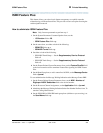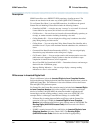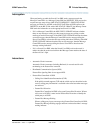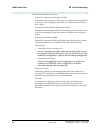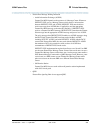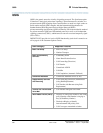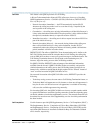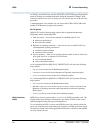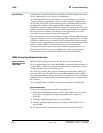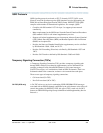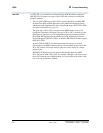
QSIG
363
Administration for Network Connectivity
555-233-504 — Issue 1 — April 2000 CID: 77730
B Private Networking
Call Offer This feature is the QSIG equivalent of Call Waiting.
A Private Telecommunication Network (PTN) offers up to four ways of invoking
QSIG Supplementary Service - Call Offer (SS-CO) (listed below). DEFINITY ECS
uses only the first way.
• Network invocation (immediate) — the PTN automatically invokes SS-CO
whenever the calling user makes a call to a user that is busy, if required by the
service profile of the calling user.
• Consultation — the calling user, on being informed that a call has failed because it
is busy at the destination and that SS-CO may be possible, is able, within a defined
time period (consultation timer), to request invocation of SS-CO.
• Immediate invocation — the calling user is able to request invocation of SS-CO as
part of the initial call set-up.
• Network invocation (delayed) — the network, having informed the calling user
that a call has failed because it is busy at the destination, invokes SS-CO
automatically unless the calling user initiates call clearing within a defined time
period (automatic call offer invocation timer).
DEFINITY ECS The effect of QSIG SS-CO on the terminating end is similar to the
DCS Call Waiting feature with the exception that for Call Waiting, the calling side
(user or PBX) does not have to convey any special message to invoke the feature. The
Call Waiting Termination feature is driven based on the terminating user (for
instance, single line analog set user with Call Waiting enabled).
For QSIG Call Offer, DEFINITY takes advantage of the additional information
available from the far end, if QSIG Call Offer invokes successfully, and provides
similar information to the calling user as the Call Waiting feature provides for on
internal calls, with the exception that the display update will be “offered” instead of
“wait” to reflect invocation of QSIG Call Offer service.
On successful invocation of the QSIG Call Offer service, DEFINITY provides the
following:
• To the busy analog set user, the same tone as Call Waiting Termination feature, or
• To the busy Multi call-appearance set (for instance, at least one call-appearance is
busy for an active call and at least one call-appearance is available for incoming
calls) user, the available appearance rings normally.
For incoming QSIG calls, the QSIG Call Offer service may use path retention which
is a generic mechanism to retain the signaling connection so that the originating party
can decide whether to invoke the supplementary service. The network connection can
be retained for more than one of the supplementary services for which path retention
has been invoked.
Call Completion Use this feature to provide QSIG Supplementary Service - Call Completion (SS-CC).
The Supplementary Service - Completion of Calls to Busy Subscribers (SS-CCBS)
and Supplementary Service - Completion of Calls on No Reply (SS-CCNR) are the
equivalent QSIG features of Automatic Callback On Busy and Automatic Callback
on No Answer, respectively.



